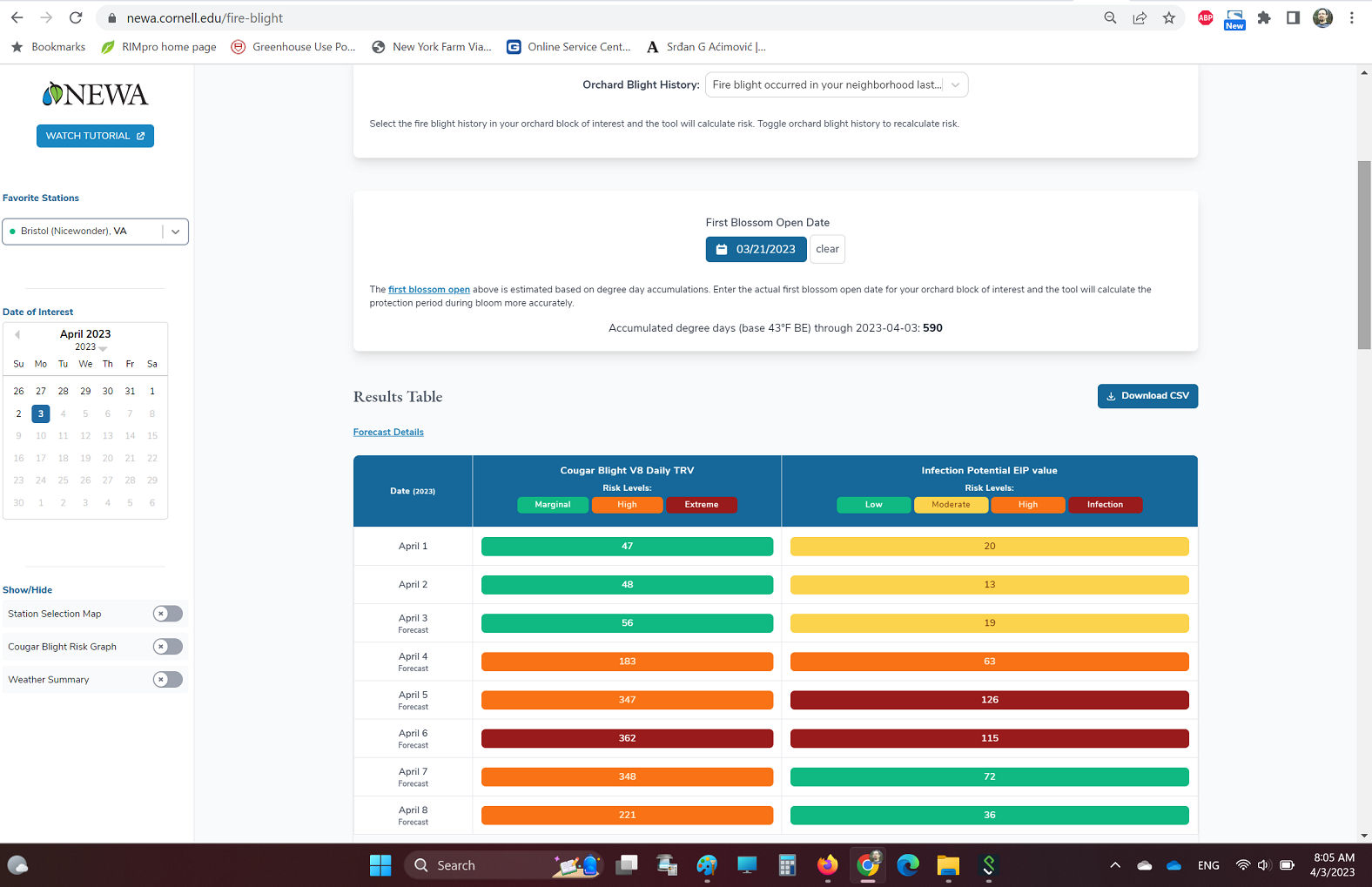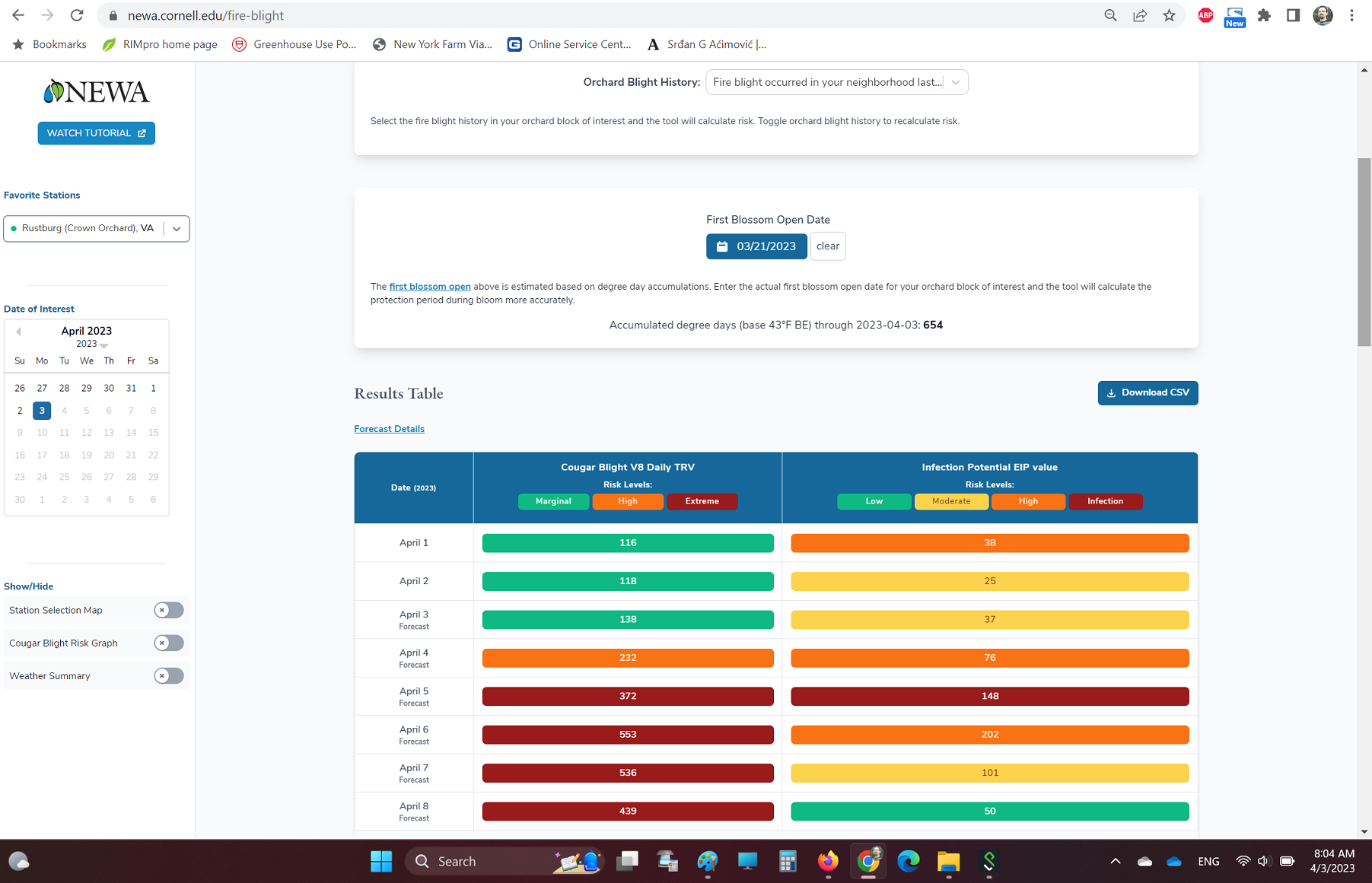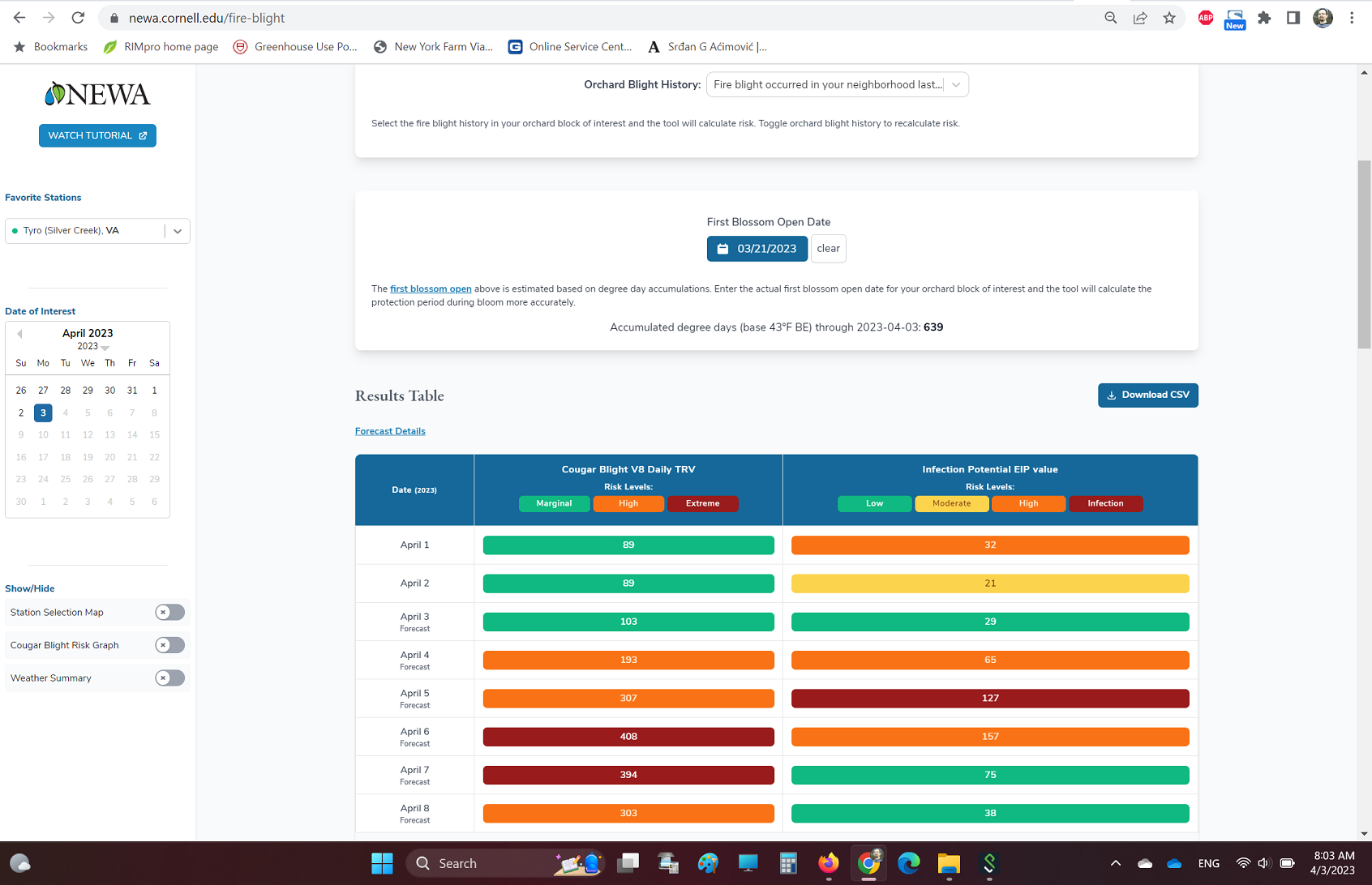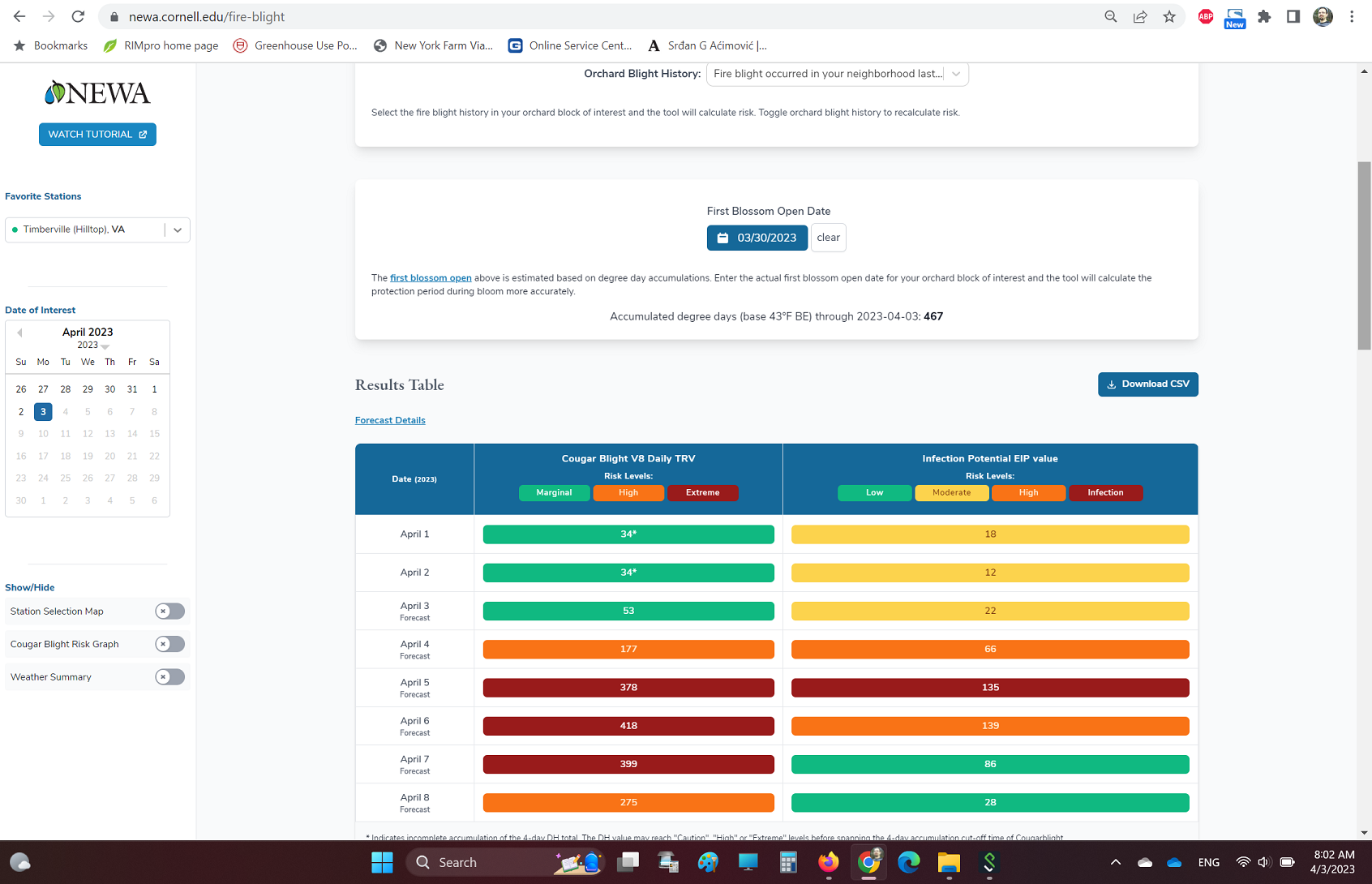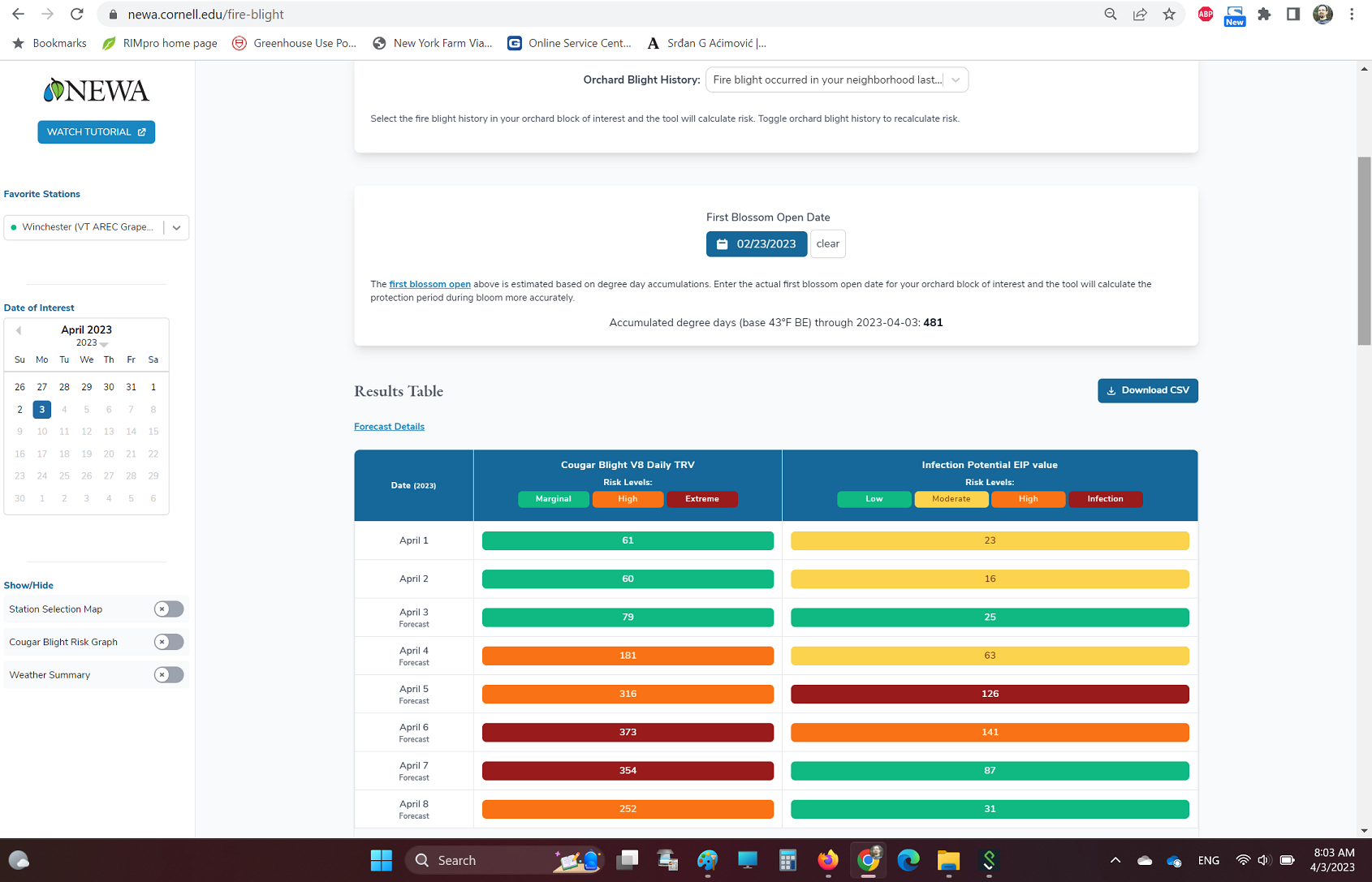1. First Major Fire Blight Infection Possible 5th and 6th April – If Current Weather Forecast Becomes Reality (EIP 115-148)
The below outputs from the NEWA EIP model using NWS forecast show that we are expecting a series wetting events on 5th and 6th April, which will lead to fire blight infection on pome fruit in bloom, if the current weather forecast becomes reality on those days. As per the NEWA’s EIP model, we start to worry when we reach the Infection potential EIP value of ≥ 100 but keep in mind that ALL the conditions need to fulfill at the same time for a fire blight infection to occur and the box with EIP to turn in dark red indicating “Infection”:
1. Open(ing) young flowers,
2. Accumulated heat units for fire blight bacterial inoculum to reach the necessary cell numbers (EIP 100 and above),
3. A wetting event (dew, rain, spray water) to wash bacteria down into the flower base (nectar glands),
4. Average temperature above 60F.
The key is, on 5 April in all VA, and in Bristol VA on 5th and 6th April, all conditions are predicted to coincide and that is why the box with EIP turned into dark red indicating infection (see print screens below).
OPTION 1: If you have a large acreage and you want to be on a safe side thinking you will get the rain on 5th and 6th April, I would recommend you to cover before the predicted wetting events any apple and pear trees in bloom with streptomycin: Harbor, or Agrimycin 17, or Fire Wall 17 WP at 1 to 1.5 lb per acre (16 – 24 oz/A) plus LI 700 at a penetrating rate or Regulaid. Based on the Regulaid label, rate which ranges from 1 to 4 pints per 100 gallons of spray mixture, I would use a 2 pints penetrating rate. Keep in mind that FireWall has changed its formulation to FireWall 50WP and the rate to use this higher concentrated material is 8 – 16 oz./Acre. If you still have FireWall 17 WP in your shed use the rate of 16 -24 oz./Acre as it is less concentrated.
OPTION 2: If you have a smaller acreage farm, the other somewhat risky option is to wait and see will you get the wetting event or not on 5-6 April. So, whether the infection will occur or not will depend on whether rain will occur or during the days with EIP value 100 or above (keep an eye on the EIP model daily so you know will the rain prediction change or not). Then, if rain occurs, protect any blooming apple cultivars with streptomycin in mix with Regulaid or LI700 using rates above by applying it up to 24 h after the infection rain event (kick-back mode of application). In case you will use LI700 instead of Regulaid, use a penetrating action rate for LI700. If wetting doesn’t occur, infection will not occur, unless you provide water with a fungicide spray application during 5-6 April which can and will trigger the infection. If you want to be on a cheaper side, Option 2 is a possibility you should consider.
*Note: In terms of timing your spray, I would trust more the EIP model in NEWA than the Cougarblight model. Keep in mind that changing the “Orchard Blight History” above the model will change how the risks for infection change in Cougarblight.
WARNING: If you used captan recently, which would not be my choice, DO NOT add Regulaid or LI700 to streptomycin for this bloom spray against fire blight. You could and should add fungicides against rust, powdery mildew or scab to this spray to make it more economical, and a good choice would be mancozeb (3 lb/A) + either Fontelis, Sercadis, Miravis or Excalia. However, if yo already see orange galls from rust in Southern and Central Virginia Inspire Super, Rhyme, Procure or Rally would be a better choice as a tank mix partner to mancozeb. Previous data indicate that using Regulaid and other surfactants in repeated sprays (if one needs 2 or 3 applications of strep during bloom) will lead to significant amounts of leaf yellowing. Hence we suggest using Regulaid or LI 700 ONLY with the first streptomycin spray application and then applying strep without the adjuvat in any subsequent sprays. Do NOT use Regulaid or LI700 with any sprays that contain thinning materials. Hence, streptomycin included with a petal fall spray should NEVER be mixed with Regulaid or LI 700. Regulaid should NEVER be combined with captan, and other adjuvants that are sometimes used with captan are generally applied at rates that will not provide the penetration effects that one gets with Regulaid. Thus, growers with a major fire blight threat this week must decide if using captan as a scab fungicide is more important to them than achieving the best possible fire blight protection (which requires a penetrating adjuvant, if it is a first major fire blight spray of the season).
